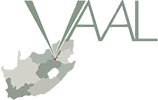

PRODUCTS
VAAL INDUSTRIAL & BUSINESS GUIDE
BUSINESS ASSOCIATIONS
CONTACT US
THE
& BUSINESS
GUIDE
INDUSTRIAL
Usco
Vecor
Product Range
Keywords
PHOTO GALLERY
MAP
WEBSITE
CONTACT DETAILS
In 1947, the South African Parliament enacted legislation detailing the establishment of an oil-from-coal industry in South Africa. This followed 20 years after the publication of a White Paper by Parliament, aiming to protect the country’s balance of payments against increasing crude oil imports in view of the lack of domestic crude oil reserves. Sasol was established on 26th September 1950 to manufacture fuels and chemicals from indigenous raw materials. Construction work on the synthetic fuels plant at Sasolburg commenced in 1952, and in 1955, the original Sasol One production units were commissioned. Sasol supplied its first gasoline and diesel to motorists at Sasolburg in November 1955. The operation of this plant was based on a combination of the German fixed-bed and the US fluidized-bed Fischer-Tropsch technologies, together with German Lurgi coal gasification technologies for the synthetic production of gasoline, diesel, other liquid fuels and chemical feedstock from coal. Feedstocks for the manufacture of synthetic rubber, fertilizers and secondary chemicals followed.
During the 1960s, Sasol became a major supplier of raw materials for the chemical industry. This included products such as solvents for paints, butadiene and styrene for synthetic rubber and ammonia for nitrogenous fertilizer. When its first naphtha cracker became operational in the mid 1960s, Sasol added ethylene and propylene (for the plastics industry) to its product portfolio.
Prior to World War II, coal provided more than two thirds of the world’s energy needs. By 1973, oil provided more than half of these needs, consumption was increasing and the first oil crisis threatened supplies from the Middle East. At the end of 1974 plans for the erection of Sasol Two were announced at a cost of over R2,4 billion. This plant was completed in March 1980. At that time, South Africa imported much of its oil from Iran and the overthrow of the Shah precipitated a further oil crisis. The result was Sasol Three, constructed in 1982 adjacent to Sasol Two. Between 1990 and 1993, Sasol One at Sasolburg underwent an R820 million renovation, during which Sasol discontinued the production of synfuels and increased the production of higher value chemicals, including ammonia, solvents, phenolics, paraffins and waxes.
Since its inception, Sasol has used coal from the surrounding coalfields of the Sasolburg-Vereeniging basin (South Africa’s third largest coal producing area). Since the middle of 2004, Sasol began replacing about 6 million tons of coal per year usage at its Sasolburg plant with natural gas transported via a 1,000 km pipeline from the Temane & Pande gas fields in Mozambique.
Sasol was listed on the Johannesburg Stock Exchange in October 1979 with 70% of its share capital being privatised. Sasol listed on the New York stock exchange on 9 April 2003.
Sasol